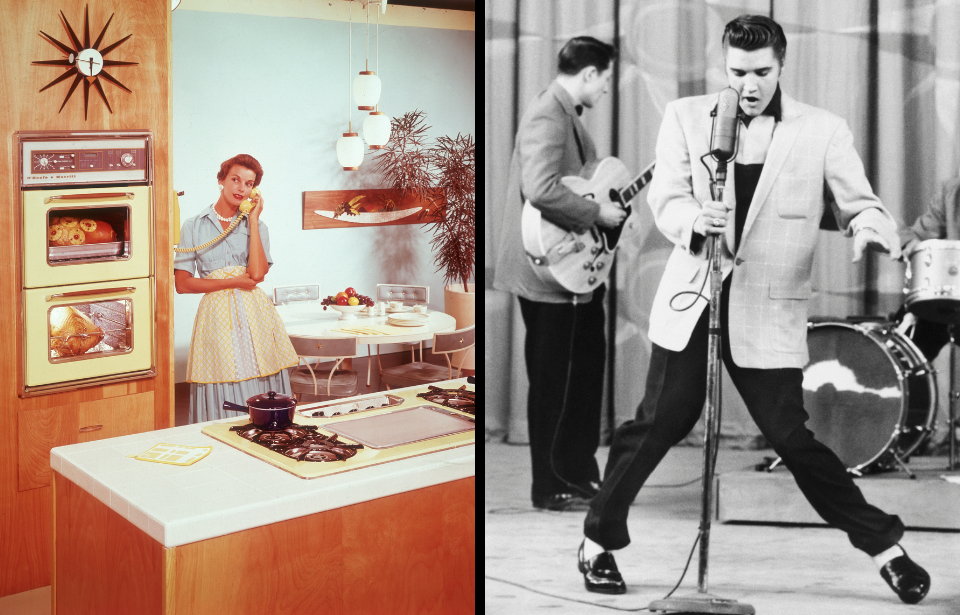America in the 1950s was defined by many different things. Following the war, the population was optimistic about the future, and this brought about change in many ways. New technologies, innovations, styles, and sounds all graced the decade, making it an iconic period in American history and a delight to see in photos.
Drive-in movie theaters

Drive-in theaters still exist today, but they are few and far between. However, back in the day, eager moviegoers would pack into cars to watch Hollywood flicks from the comfort of their cars. Carhops would race around, offering tasty treats that only enhanced the experience. Many dates were had at drive-in theaters, and maybe even a couple of stolen kisses.
Cars to swoon over

One of the defining features of the 1950s was the cars that the decade produced. These classic cars were more than just transportation, they were symbols of style and innovation. Tail fins and bright colors made this era of automobiles unforgettable. Although, we’re pretty sure they weren’t the best on gas.
The rise of the roller rink
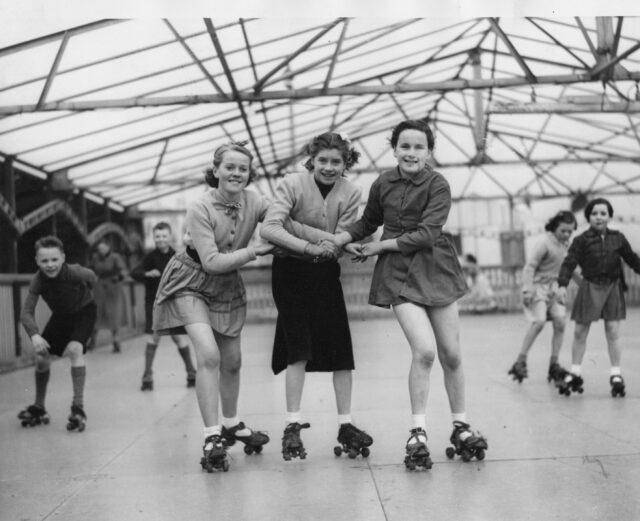
One way people spent their free time was by hitting up the local roller rink to skate to the musical beats of the 1950s. The rinks were a gathering place that fostered community, friendship, and fun. Roller skating showcased creativity and skill, and with each turn around the rink, skaters would leave their stresses and worries behind them, if only for a short time.
Soda pop shops

A favorite for teenagers of the 1950s was to gather at the local soda pop shops. After school and on the weekends, friends and peers would sit in the shop to enjoy a refreshing and cold soda pop. Flavors included cream soda and rootbeer floats, perfect for quenching one’s thirst. These soda shops did more than just serve soda — they also served as social hotspots.
Summer camp in its prime

Summer camps just aren’t the same anymore. Back in the 1950s, children were sent off to lakes and campsites for weeks at a time. Not only did this give parents some time alone, but it also provided these kids with invaluable skills and the opportunity to experience nature at its finest. Strong friendships were fostered among campgoers, with many children returning to the same camps year after year for the same great fun they knew and loved.
Lemonade stands set up on corners

Something you don’t often see anymore is young children setting up tables to sell lemonade on their street. Back in the day, however, this was a favorite activity for children. These little entrepreneurs often sold more than just lemonade, offering sweet treats to neighboring kids who had a penny or a nickel to spare. Such an activity taught them the meaning of money and gave them the opportunity for financial independence at a young age. We’re sure most took the money they made off their stands to buy their favorite comic books, candies, and more.
The television revolution
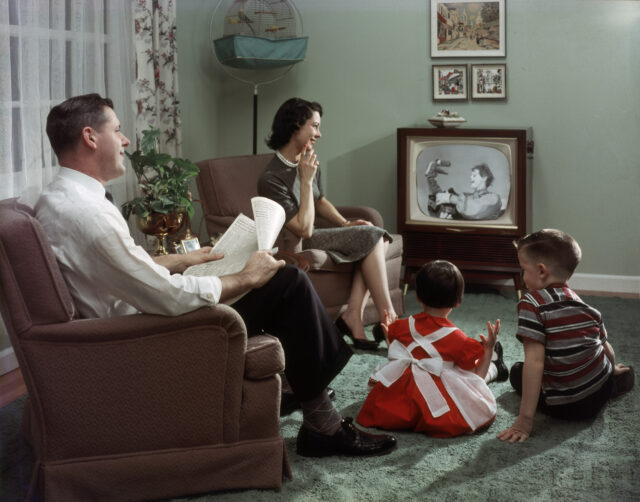
While television has already been around for decades, it transformed into a revolution during the 1950s. Thanks to the success of several television shows, such as I Love Lucy and Perry Mason, the television set became a household staple. Families would gather around to enjoy their favorite programs, as well as to keep on top of major news events, including things like the launching of Sputnik and the election of Dwight D. Eisenhower as President.
This was the Golden Age of Style
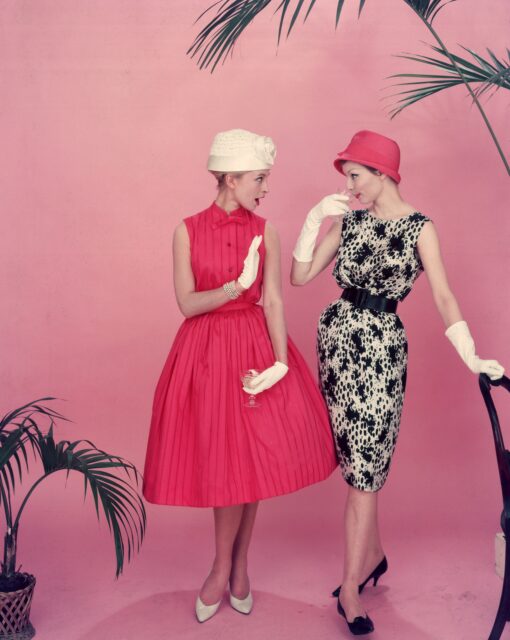
Fashion was at an all-time high during the 1950s, particularly for women. The average woman sported beautiful tea-length skirts with tightly snatched waists, emulating the looks of their favorite Hollywood stars, such as Marilyn Monroe and Elizabeth Taylor. Pencil skirts, head scarfs, and cat-eye sunglasses all became extremely popular during this time, emphasizing the importance of sophistication and elegance in the fashion of the period. It is no surprise, then, that the women of this era were turning heads everywhere they went.
The Beatniks emerged

A beatnik is a person who rejects conventional aspects of society in favor of their own artistic self-expression. They first emerged in the 1950s and represented a movement defined by freedom and individualism. At this time, they pursued things like philosophy, poetry, and other mediums to question conformity. You could often identify a beatnik thanks to their bohemian style, sporting accessories like berets, sunglasses, and tight black clothing.
Musical Doo-Wops

Music experienced a revolution in the 1950s in more ways than one. The doo-wop sound was one of the genres to emerge from the decade, featuring soulful songs and harmonies. Originating from African American culture, it is thanks to groups like The Drifters, The Platters, and The Coasters that the doo-wop sound became extremely popular.
The Rock ‘n Roll uprising

Another musical outburst the decade experienced was the rise of rock ’n’ roll. This is when Elvis Presley emerged as a musical revolutionary and a teenage heartthrob. It didn’t take long for his unique dance moves and epic musical sound to take over the teenage population, with more artists like Chuck Berry and Buddy Holly joining in the genre. People would line up around the block to get tickets to the next big rock ’n’ roll show. When the artists finally made it on stage, the girls fell in love, and the boys tried to copy their looks.
Jukebox classics

One of the best ways for people of the decade to enjoy music together was through the use of the jukebox. Set up in diners and bars, jukeboxes offered the musical stylings of multiple artists, yours for the picking. They were inexpensive to start up, and people would gather around the dance floor to cut a rug to the tunes they played. There were few better feelings than scanning the directory and finding the song you were hoping was available.
Suburban living
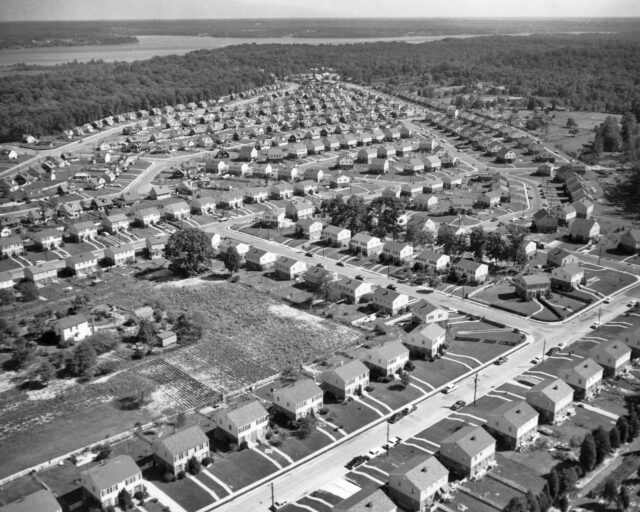
Another defining feature to come out of the decade was the rise of suburbia. Nuclear families left the big cities to live out their days in affordable houses on decent plots of land. Entire neighborhoods were constructed, with the white picket fence serving as the symbol of success in post-war America. These suburban communities thrived, with neighborhood gatherings and barbecues aplenty.
Kitchens full of appliances

While 1950s society expected women to stay and care for the home, that didn’t mean that the work they did there had to be difficult. Heavily inspired by scientific progress, many companies came out with state-of-the-art appliances that made tasks in the house, largely in the kitchen, a breeze. Many items are staples in homes today, including refrigerators, dishwashers, and washing machines. Domestic work was made far easier thanks to these new appliances.
Specific architecture
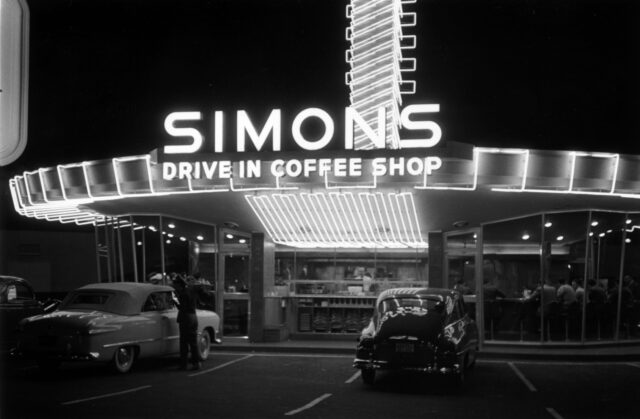
The decade is well-known for the unique shape and style of buildings that were constructed at the time. The architectural style is called “Googie” and was defined by horizontal structures, animated shapes, and bold colors. All kinds of establishments were built in this style, including coffee shops, gas stations, and motels. They were usually accompanied by fun and eye-catching signs lit up with bright lights to draw in customers, some of which still remain today.
More from us: A Trip Through New York City in 1911 – Gloriously Restored and Colorized Footage
Check out our newest newsletter: “Today in History.” Get your daily dose of trivia, nostalgia, and fascinating facts directly to your inbox. Start your mornings off with a piece of history linked to the very day we send it. Always free and easy to cancel. Subscribe today and join us on a daily stroll through time.
